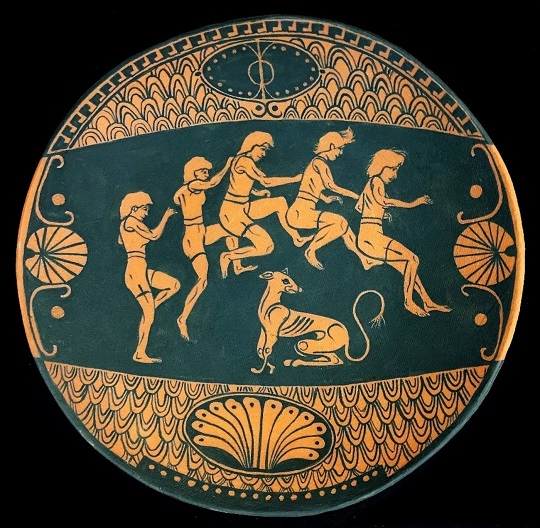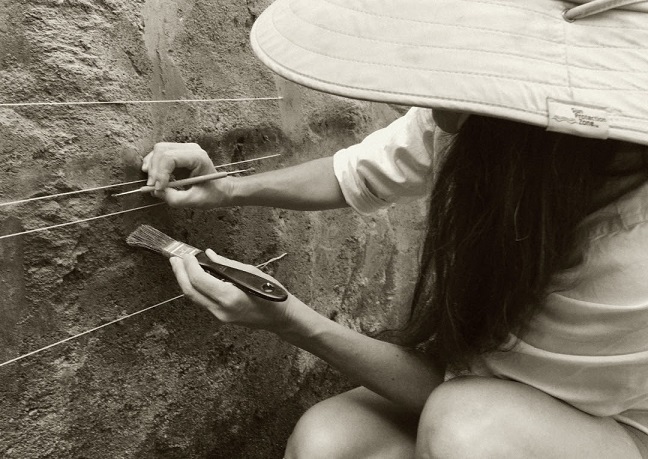According to Renee Gondek, a specialist in Greek vase-painting and imagery related to gender construction, this dynamic would have been highly unusual in ancient Greece. “She is actually touching him, which would never be on a Greek vase,” Gondek said in an interview with Hyperallergic. Men always initiated touch, even in depictions of wedding processions. “A man grabs the woman, by the wrist or by the hand, and leads her forward. She doesn’t touch. She tilts her head downwards in this gesture of modesty and veneration toward her groom.”
The woman’s gesture in Dondelinger’s version suggests a more gender-equal society — a visual effect that’s heightened, Gondek said, by the fact that men and women share the same skin tone. In ancient Greek and Egyptian paintings, women were shown with lighter skin to illustrate what was likely an aesthetic ideal. (Dondelinger said this was a happy coincidence, but one that jives with the message of her series.)
Despite drastic departures from history in its depictions of women, the M.Flandia series may have clung to ancient Greek tradition in one sense. Images on the bottoms of kylikes were often intentionally outlandish, to be drunkenly discovered after guzzling the mixture of wine and water that the vessel contained. “You might invite people over to your dining party,” Gondek explained. “And as they’re drinking their wine and emptying their kylix, you might want to humor them with some kind of funny scene … It reveals itself to you as you down all of your wine.”
The scenes painted by Dondelinger would certainly be shocking to the men of ancient Greece. As for the contemporary viewer? “It’s harder than ever to figure out what is ‘fake news’ and what is real,” Dondelinger said. “This series encourages critical thinking on many levels.”






